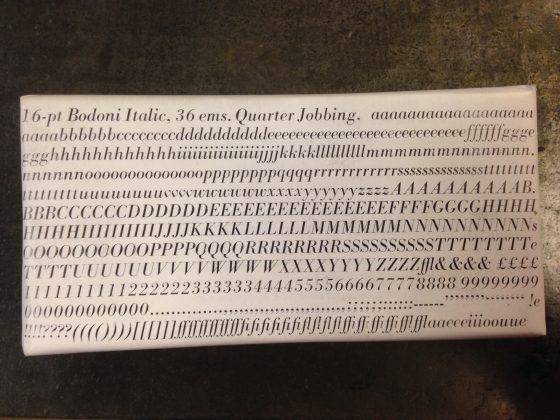A quarter strength jobbing fount of 16-point italic.
Giambattista Bodoni, born at Saluzzo in 1740, came from a family of printers. He served his apprenticeship in the press of the Propaganda Fide and later took charge of the Stamperia Reale at Parma. He began by using old face types from Paris, but soon adopted the transitional style, and by 1785 he was producing his own designs copied from the modern face of the Didots and cut with superb precision.
On the continent the development of the modern face was more logical and complete than it was in England. In Bodoni’s faces all its characteristics were developed to the full, and they appear at their extreme in the most widely used revival, Series 135, which was cut by the Monotype Cororation in 1921. Here the strong vertical stress, the regular and emphatic shading, unbracketed serifs, ranging figures and long ascenders and descenders are all to be found. It is, in spite of its small x-height, one of the darkest text faces and is very wide for its appearing size. The strong vertical stress and combination of heavy and hair lines make it a demanding face which requires generous leading and careful inking, preferably printed on a smooth, soft-surfaced paper. Given these conditions it is, in larger sizes particularly, a face of great dignity and splendour.



